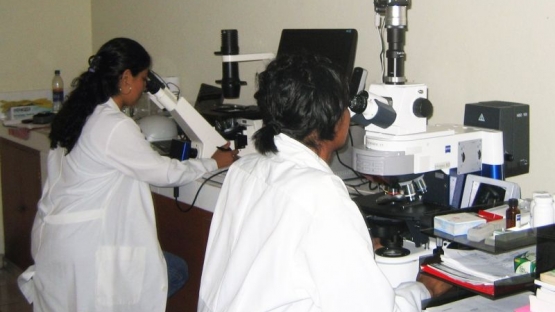El Salvador's 300 km of Pacific Ocean coastline is very important to the country's economy - some thirty per cent of the population lives within the coastal zone and relies on the fishing industry. The coastline is, however, vulnerable to harmful algae blooms (HAB) also popularly known as red tides, which seriously damage the environment and lead to great financial losses.
Harmful algae blooms are caused by a rapid increase in the concentration of toxic algae. Shellfish feed on poisonous phytoplankton and get infected. Despite the name, HABs can be red, blue, or invisible to the eye.
Using nuclear technology in combination with other techniques, toxin levels can be determined quickly and accurately. This information can be used to provide early warnings of toxicity levels of algae blooms to local fisherman, reducing the risk to food safety and ensuring that toxic seafood does not make its way into the human food chain.
The IAEA's Department of Technical Cooperation is working with the University of El Salvador and government institutions to help fishing communities benefit from this technology. Through the technical cooperation programme, the Laboratory of Marine Toxins of the University of El Salvador (LABTOX-UES) has been established. This laboratory is extremely important to the people of El Salvador, and indeed to all the people in the region, as it is the only laboratory in Central America able to identify red tide events.
The IAEA equipped the laboratory and provided training on the specialized detection equipment that is used to monitor harmful algal blooms. LABTOX serves not just the university, but a much larger community as well. Students use the laboratory to conduct research, and the Government of El Salvador relies on the facility to detect toxicity in HABs for its early warning system. This system depends on a network of monitoring stations located in the fishing parks that monitor and control for problems of toxicity. Samples from the monitoring station are brought to the LABTOX facility for analysis. This system has proven itself invaluable time and time again. In fact, a December 2009 red tide was detected using this laboratory and fisherman and locals were pre-warned of the toxins in the waters.
The strong support for the establishment of this laboratory reflects the important role that the detection of oceanographic events plays in protecting national food security, public health and the economy. The laboratory facility at the University of El Salvador is a prime example of the benefits that cooperation between the IAEA and Member States can bring. The facility contributes to the sustainable management of fishery products and the coastal economy of Central America, increases food security and is a resource for faculty, students and the Government: all benefits that will last long into the future.


